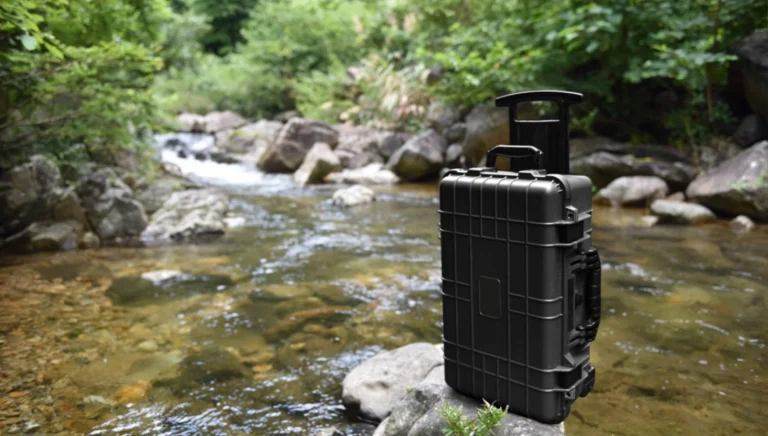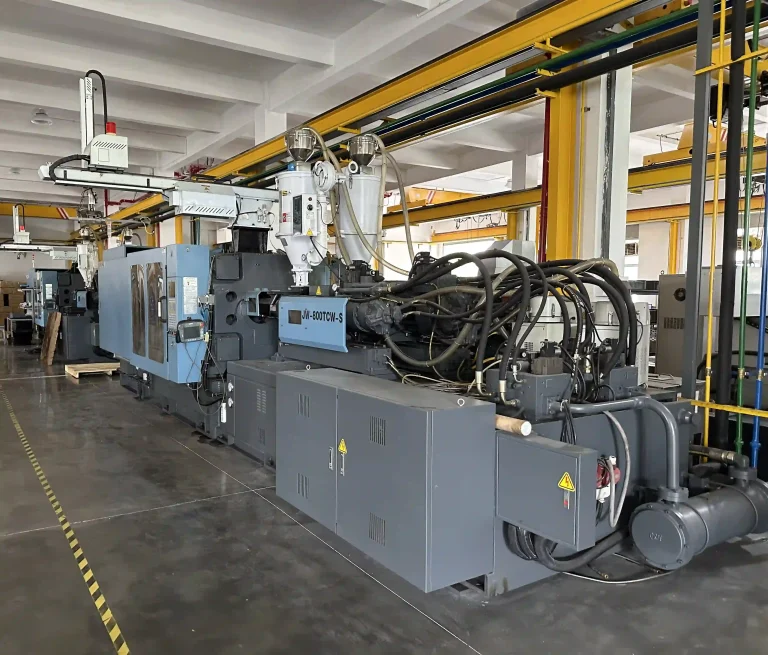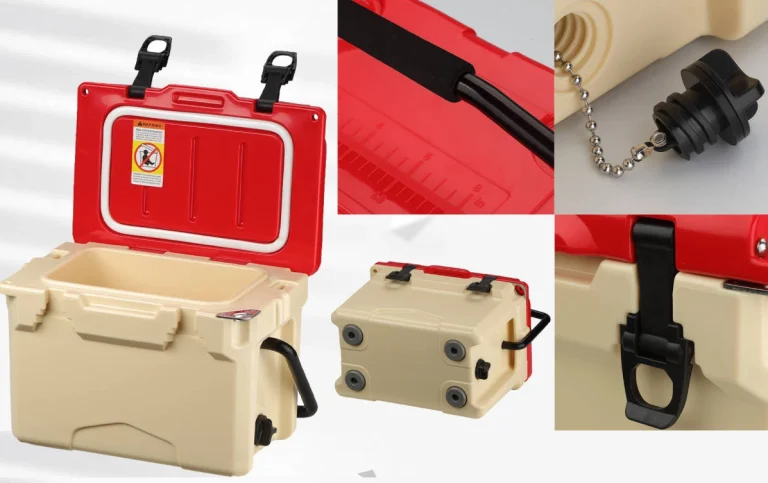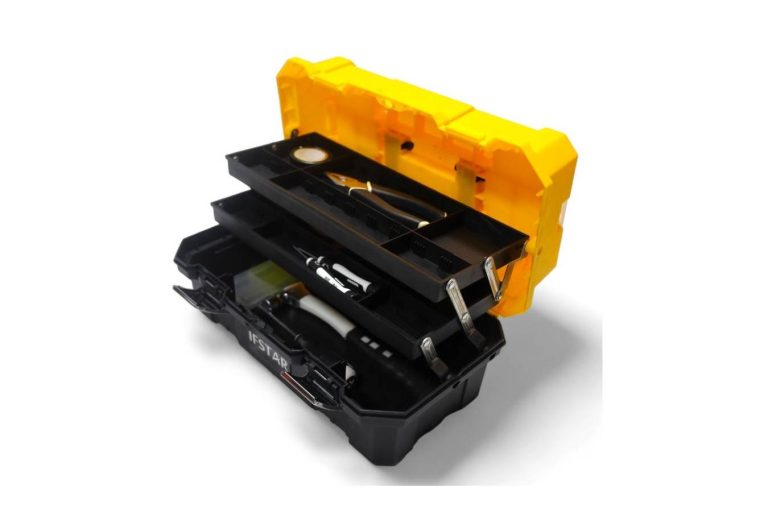Rotational molding, or rotomolding, is a favorite way to make really tough plastic cases. These cases are awesome for protecting tools, military gear, or electronics. They’re super durable and last way longer than other options. This article digs into what makes rotomolded cases so strong—their design, materials, and how they’re crafted. You’ll see why they’re better than cases made by injection or blow molding when dealing with rough stuff or harsh environments.
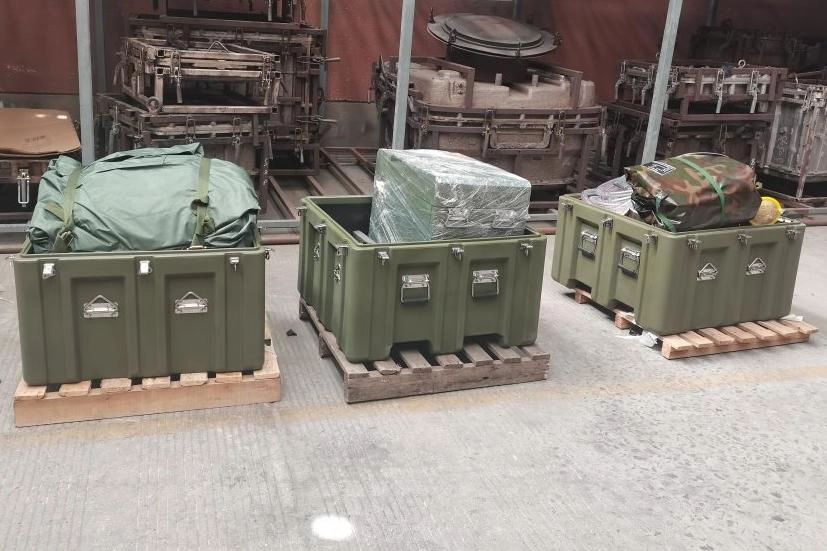
Structural Benefits of Rotational Molding
One Solid Piece
Rotomolding builds cases in one solid chunk. Unlike other methods that piece parts together, it uses just one mold cycle. No seams or joints mean fewer spots that could crack or leak. This tight setup keeps your gear safe from bumps and bad weather.
Same Thickness Everywhere
The mold spins in two directions while heating. This spreads the plastic evenly across all surfaces. You get walls with the same thickness all over. Even walls mean no weak or thin areas when the case takes a hit.
Extra-Strong Corners
Rotomolding lets makers thicken up corners or high-stress spots. These tougher parts are built right into the case. No extra work is needed. This adds strength right where impacts are likely to happen.
Material Qualities That Boost Durability
Tough, Shock-Proof Plastics
Rotomolded cases often use rugged plastics like polyethylene (PE) or acrylonitrile butadiene styrene (ABS). These soak up shocks and don’t crack, even with rough handling or heavy loads. The case body uses strong, impact-resistant plastic. This shows how tough materials help cases last.
Stands Up to Sun and Chemicals
Being tough isn’t just about taking hits. It’s also about handling the outdoors. Many durable rotomolded plastic cases for tools block UV rays and resist chemicals. They hold up to sunlight, water, oils, or harsh stuff without wearing out.
Bendy but Strong
Rotomolded plastics are flexible yet tough. They can bend a little under pressure instead of breaking. This is perfect for outdoor adventures or travel in rough places.
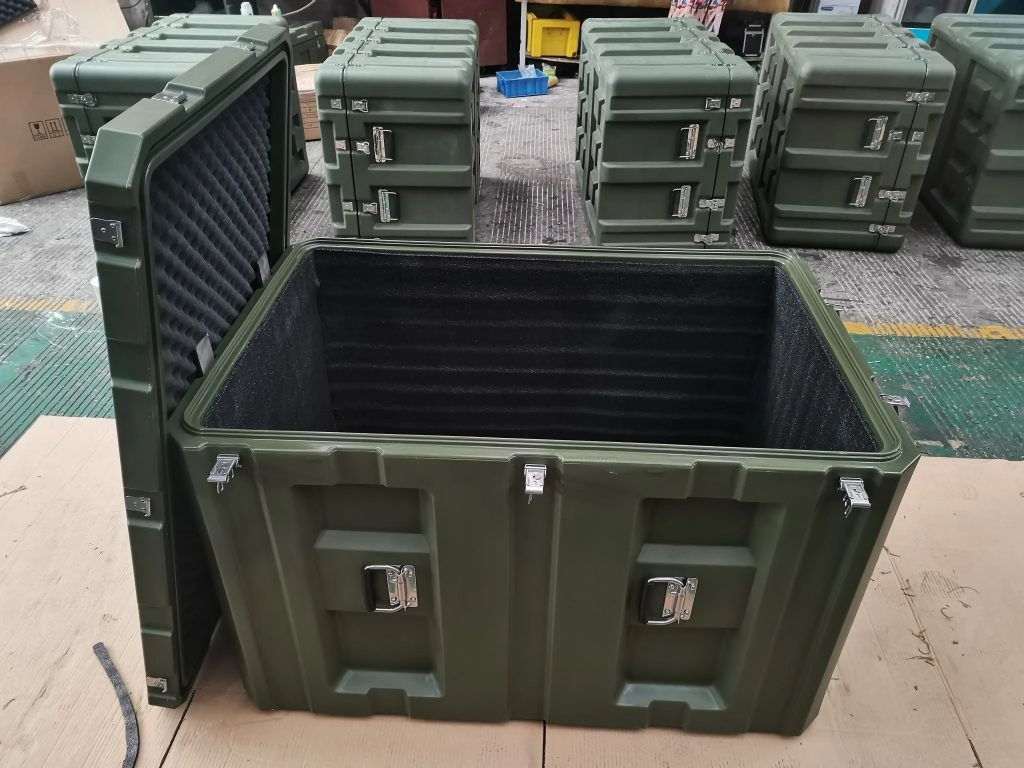
Benefits of the Rotomolding Process
Slow Cooling for Strength
After heating and shaping, rotomolding cools the plastic slowly. This cuts down on stress inside the material. Less stress means less chance of warping or wearing out early. Other methods, like injection molding, cool faster and can trap stress in the plastic.
Even Plastic Coating
The two-way spinning spreads plastic smoothly inside the mold. This makes walls the same thickness everywhere. It also avoids clumps or gaps that could make the case weaker.
Fewer Weak Spots Than Injection Molding
Injection-molded parts often have weld lines where plastic flows meet. Those spots can be weak. Rotomolding avoids this by coating the mold evenly. It doesn’t push plastic into tight spots.
Performance in Tough Conditions
Strong Against Cracks
Shockproof rotomolded cases for outdoor use stay strong against impacts and heavy loads. A tough ABS shell with aluminum reinforcement can handle big knocks. This shows how well-made plastics take on serious stress without breaking.
Steady in Crazy Temperatures
Cases used outside or in industrial settings deal with wild temperature swings. A tough ABS shell with aluminum reinforcement can handle temperatures from -20°F to 150°F. Rotomolded cases keep their shape and work great in these conditions.
Blocks Water and Dust
The one-piece design keeps water and dust out. With no joints or glue lines for dirt to sneak through, many waterproof rotomolded cases meet IP-rated standards. This makes them awesome for military, marine, or field use where airtight protection is a must.
Comparison with Other Plastic Methods
Injection-Molded Cases Don’t Keep Up
Injection-molded cases are great for detailed designs. But they often have weak spots like weld lines or thinner walls in tricky areas. Their case body uses strong, impact-resistant plastic. Still, they’re better for lighter jobs. They can’t match the solid strength of rotomolded cases.
Blow-Molded Cases Wear Out Quicker
Blow molding makes hollow stuff like bottles or lightweight containers. But these cases often lack strong corners or even wall thickness. They wear out faster than rotomolded cases over time.
Lasts Longer Than Other Cases
When you think about costs—like fixing, replacing, or downtime—rotomolded cases come out ahead. Their rugged design and sturdy materials make them last longer. Strong and durable plastic. This is especially true in tough fields like defense, aerospace, logistics, or outdoor fun.
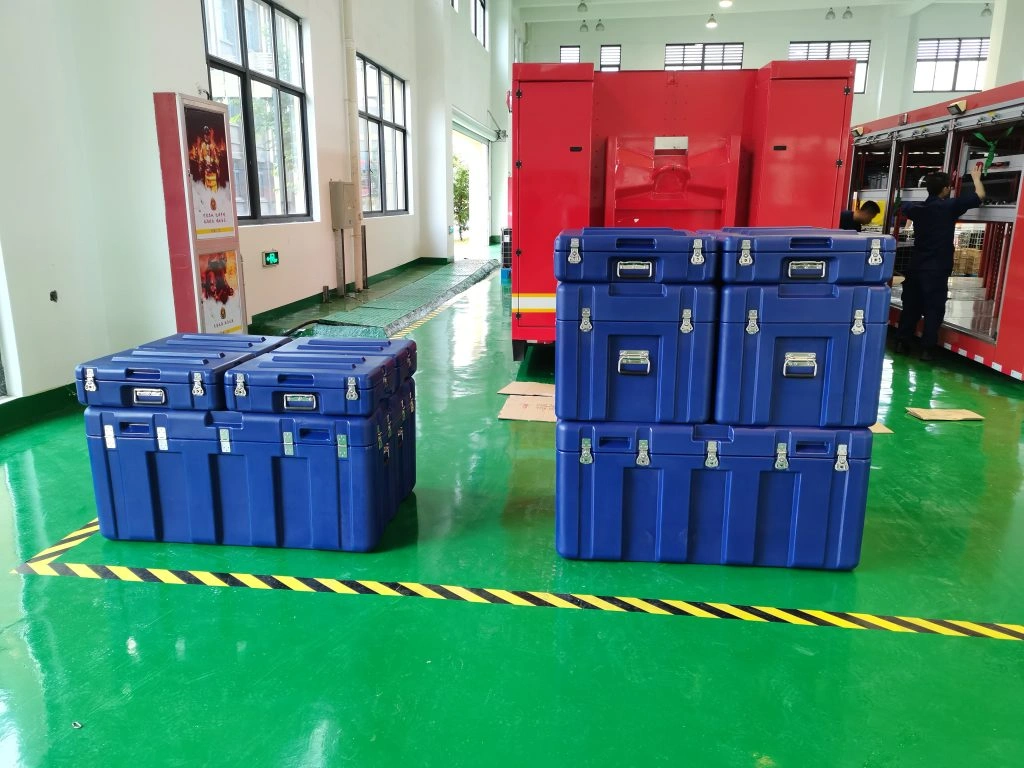
If you need tough, custom cases for rough environments, teaming up with a skilled maker is key. Nothing over-the-top—just good, reliable plastic. And yep, we’re in that business too. We craft secure, custom plastic cases here and overseas. Using methods like blow molding, injection molding, rotomolding, and thermoforming, we can make just about any protective case for your gear. Whether you need a few test models or big batches made just for you, Yifu has the skills to deliver awesome rotomolded case solutions tailored to your needs.
FAQ
Q: Which industries use rotomolded cases the most?
A: You’ll see them in aerospace, automotive, medical, and outdoor recreation. They’re great for keeping delicate gear, tools, or products safe during transport or in tough settings.
Q: Is rotomolding cheaper than other methods?
A: For small to medium batches, rotomolding is often more affordable. Its molds are simpler and cost less. Injection molding needs expensive molds. Blow molding might need extra finishing, which can bump up costs for complex designs.
Q: Can rotomolded cases be made to fit special needs?
A: Yep, rotomolding allows custom shapes, sizes, and extras like foam inserts or mounting points. This makes it easy to create cases that fit your gear perfectly.
Q: How do you take care of a rotomolded case?
A: They don’t need much care. Just wipe them down with mild soap and water. Their tough materials resist scratches and dents, so you rarely need to fix them.

